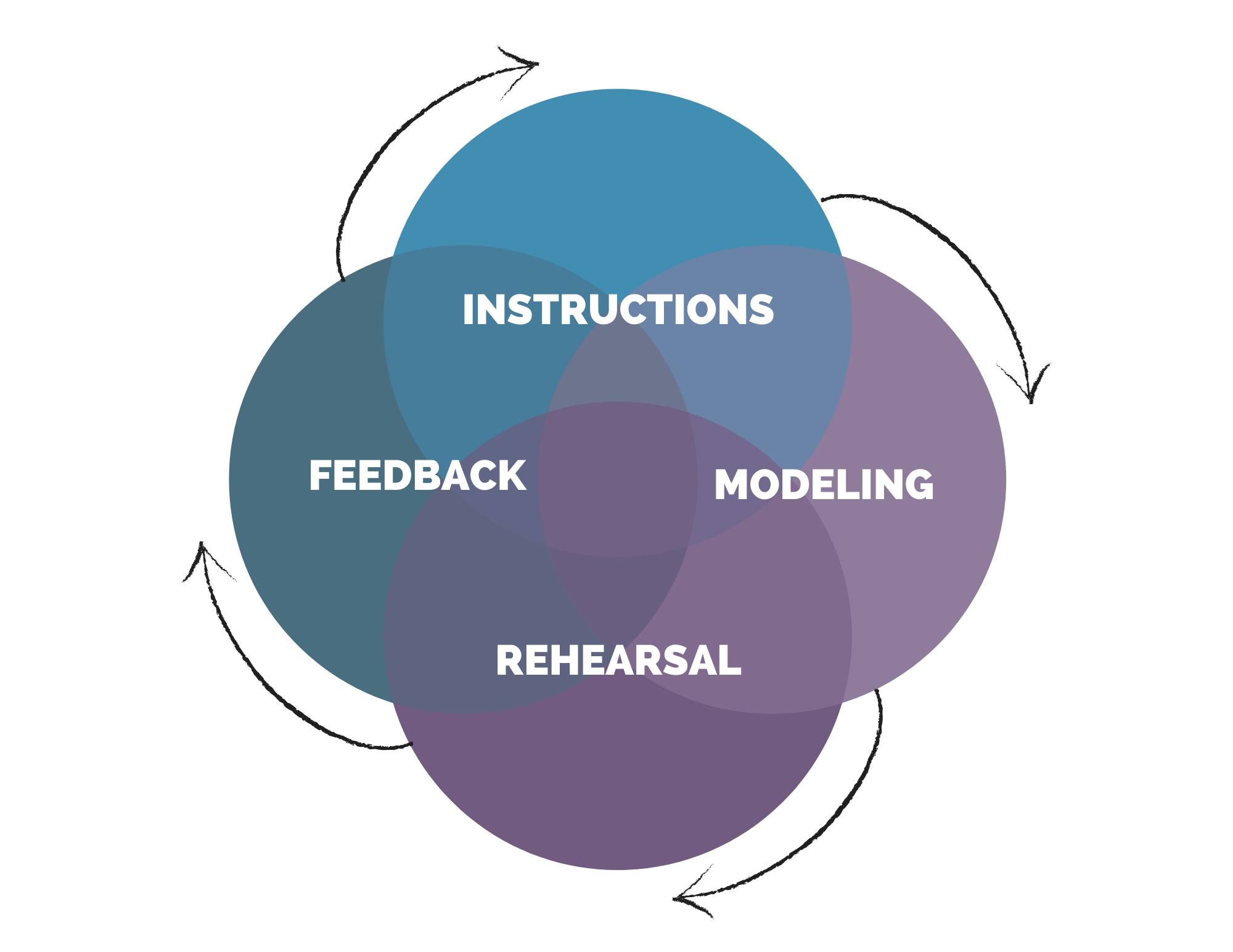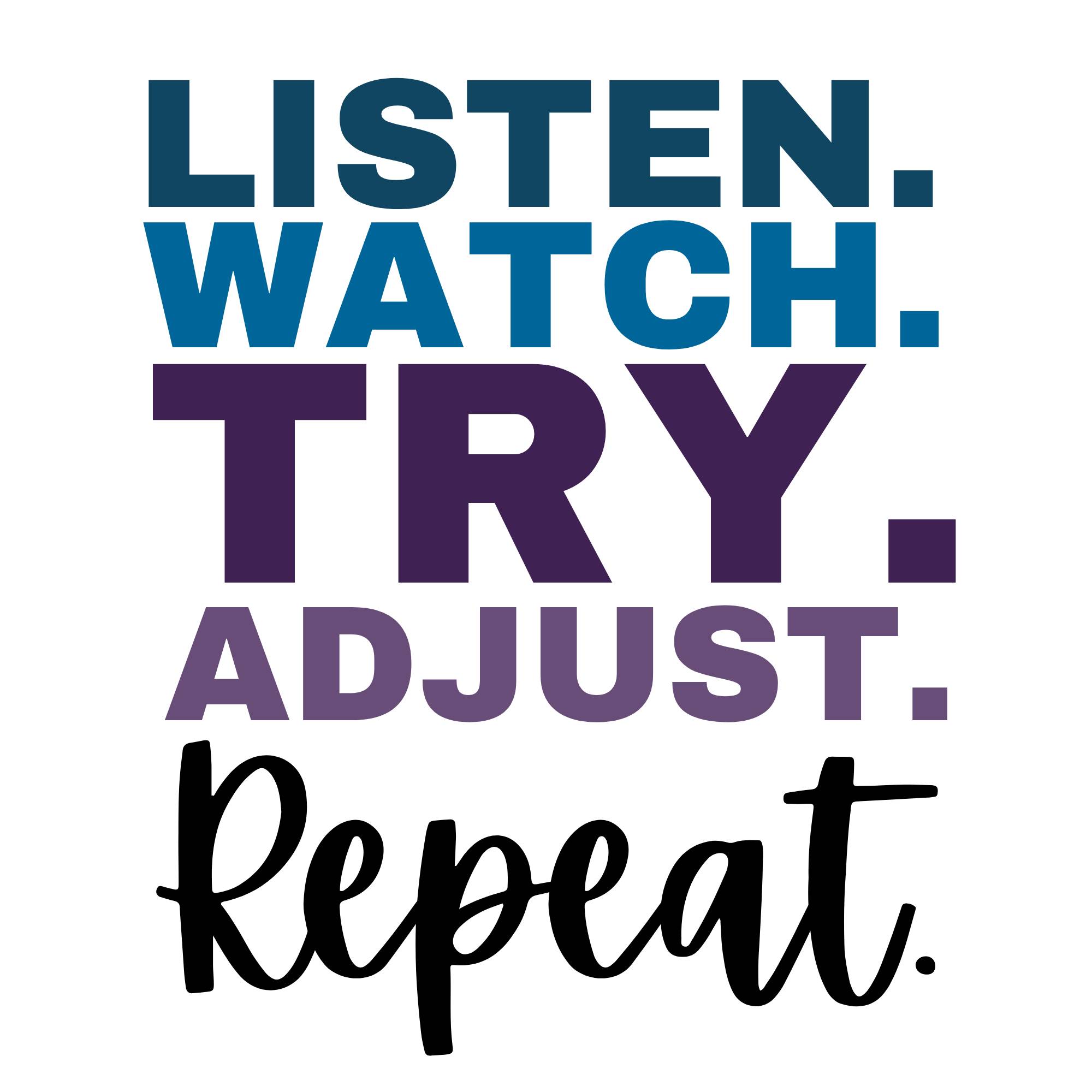Behavioral Skills Training (BST): A Strategy for Training and Coaching
This article originally appeared in START Connecting in January 2022.
Behavioral Skills Training (BST) is an evidence-based package to systematically train and coach a wide range of skills. The literature on this evidence-based strategy is quite broad and demonstrates effectiveness for children and adults across many skills, and may be used individually or in a group format.
While simple in concept, there is planning involved along with decisions at each step of BST that will make it more or less effective. This article will highlight those nuances to help you use this strategy most effectively with a focus on training school staff. The types of skills that may be taught using BST are virtually endless and it is a strategy worth learning.
|
Pre-Training Steps |
Description |
|---|---|
|
Define the target skill |
In order to teach a skill, it needs to be clearly defined in a way that is observable and measurable. |
|
Provide the rationale for teaching the skill |
Identify a compelling rationale for the time and effort to learn the skill. The compelling “why” will lead you to mutual goals and a collaborative investment in the process. |
|
Create instructions and a fidelity checklist for using the skill |
Instructions are concise and include the definition and rationale. Steps are outlined in a fidelity checklist and have enough detail for accurate implementation and to measure whether the criterion performance has been met. *See the "Target Skill" Fidelity Checklist Template and the Example Fidelity Checklist for Using a Visual Support |
|
Identify the staff who need to be trained |
Training may be offered generally to staff to use with various students, or if the skill is necessary for a specific student, train the staff who are working directly with the student. |
|
BST Steps |
Description |
|---|---|
|
Instructions |
Explain the skill using verbal and written descriptions. The fidelity checklist is a good way to provide the written steps of the skill. |
|
Modeling |
Demonstrate/role-play what the skill looks like in a way that is authentic and complete, either in vivo (live) or using a video example. Provide multiple exemplars, which may include examples and non-examples. Tip: See steps for creating a video model in DiGennaro et al. (2018), p. 376. |
|
Rehearsal |
Practice the skill in a way similar to the role-play or video model, and use the fidelity checklist as a guide. Repeated practice leads to fluency and confidence with the skill. Tip: In a group format, everyone has an opportunity to practice. |
|
Feedback |
Give clear, behavior specific feedback that is both acknowledgement of correct performance and correction for errors. The fidelity checklist is used to identify steps completed accurately and steps that need practice. Tip: Focus on 1-2 corrections at a time and then practice again. |
|
Additional Supports |
Description |
|---|---|
|
Progress Monitoring |
Collect data to show accurate implementation by using the fidelity checklist. |
|
Follow-up Coaching |
Initial training will be conducted until the skill is mastered. However, follow-up coaching and “booster sessions” may be needed to ensure maintenance of accurate implementation and to avoid drift away from the fidelity checklist. |
|
Reinforcement |
Implementing new skills may be challenging and incentives that reinforce the new behaviors that maintain the learned skill will lead to better outcomes for the students and the staff. Identify reinforcers specific to the individuals being trained (e.g., acknowledgement, check-ins, assistance making materials). |
What can happen if you do not give the opportunity for rehearsal and feedback?
We understand this seems like a lot of effort, but it is worth it if you are invested in learning and using a new skill. Watch this video (3:31) to see what happens when you instruct and model without rehearsal and feedback. You can imagine how a similar situation might happen if, for example, a social worker shares a skill with a teacher, who then shares it with a classroom staff member, who then uses it with a student - all without using a BST process. The integrity of the skill drifts and may not resemble the original plan. Without this fidelity of implementation, we may end up implementing a behavior plan incorrectly, teaching inaccurately, and ultimately creating more problems.
What is the takeaway? Telling isn’t training, told isn’t taught. We need to not only provide instruction but model what the skill looks like and then give opportunities to practice with feedback with repeated opportunities. This gets us to competent use of the skills. For many people, this will be new and practicing a skill with someone watching may be uncomfortable. Focus on the common goal of improving skills for the benefit of students and once you get past the first few awkward moments, it will get easier.
Please review the resources below including an example BST training protocol, an implementation template, graphics, and articles.
Example of a BST Training Protocol for Using a Visual Support:
- Behavioral Skills Training (BST) Protocol for Staff Training: Using a Visual Support
- Example of Fidelity Checklist Using a Visual Support
Implementation Templates:
Sample Articles:
- Get your BST on by Mission Cognition
- DiGennaro Reed Florence, D., Blackman, A. L., Erath, T. G., Brand, D., & Novak, M. D. (2018). Guidelines for using behavioral skills training to provide teacher support. Teaching Exceptional Children, 50(6), 373-380.
- Jull, S., & Mirenda, P. (2016). Effects of a staff training program on community instructors’ ability to teach swimming skills to children with autism. Journal of Positive Behavior Interventions, 18(1), 29-40.
- Parsons, M. B., Rollyson, J. H., & Reid, D. H. (2013). Teaching practitioners to conduct behavioral skills training: A pyramidal approach for training multiple human service staff. Behavior Analysis in Practice, 6(2), 4-16.
- Yates, P. A., Chopra, R. V., Sobeck, E. E., Douglas, S. N., Morano, S., Walker, V. L., & Schulze, R. (2020). Working with paraeducators: Tools and strategies for planning, performance feedback, and evaluation. Intervention in School and Clinic, 56(1) 43-50.
- Behavioral Skills Training (BST) References
Written by: Amy Matthews, Ph.D., BCBA - Project Director



